Last summer, temperatures in the southern Spanish city of Seville hit more than 40 degrees Celsius (104 degrees Fahrenheit). The heatwave was so intense it earned itself a name: Heatwave Yago, the city’s second named event in two years.
Seville, among other cities in Europe and around the world, is facing temperatures that it was not built to handle. In the summer of 2022, extreme heat melted railway lines and airport tarmac in London, England. In July 2023, Germans started considering midday siestas to escape the sweltering heat.
As temperatures soar, cities accustomed to cooler temperatures are seeking ways to adapt that avoid relying on energy-intensive solutions like air conditioning.
A small research group in Seville is taking inspiration from ancient Middle Eastern cultures that learned to live with the heat before electricity could provide respite.
Some see their efforts as honouring the wisdom of ancient thinkers, while others say that these old systems are far more than a technology – they reflect a mindset of sustainability that today’s world is desperately trying to resurrect.
‘Special relationship between humans and nature’
Majid Labbaf Khaneiki is one of a handful of experts helping bring 3,000-year-old underground aqueduct technology, called qanats, to the modern world.
Early qanat tunnels, which were built manually with picks and shovels, appeared in China, Oman, the United Arab Emirates and Afghanistan. However, scholars estimate the first qanat was born in the early first millennium in Persia, and then spread to arid regions throughout the world.
The ancient system is made up of a network of underground canals – 20 to 200 metres below the desert’s surface – that transport water from higher altitudes to lower ones. Built on a slight slope, the canals use gravity to transport the water. A series of well-like vertical shafts allow for access and maintenance.
From above, the system looks like thousands of lined-up anthills winding through the desert. The real excitement happens underground where the water is collected before it travels through the canals.
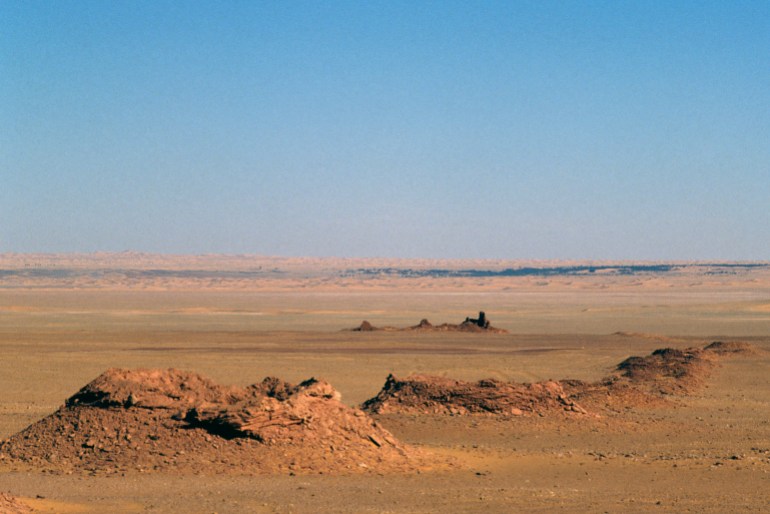 A qanat near Timimoun, Algeria. Qanats often look like anthills in the desert [DeAgostini/Getty Images]
A qanat near Timimoun, Algeria. Qanats often look like anthills in the desert [DeAgostini/Getty Images]Khaneiki, a 49-year-old professor in archaeohydrology at the University of Nizwa in Oman, has spent his entire career studying ancient tunnels that carry water under the surface of arid and semi-arid environments. He grew up in a house filled with history books and a father with a passion for archaeology.
Khaneiki’s family hails from a small arid village in Eastern Iran called Kanek – the linguistic root of his last name. Khaneiki spent some summers there growing up. “The only water that supplied that village was the qanat,” he says, adding that it ran directly through the village, allowing it to become an oasis of green in the middle of the desert.
“The qanat was actually a congregation point for people. I remember I met other children exactly at the place and we used to play there,” he says. “The qanat system goes hand-in-hand with social interaction. Maybe that’s why I’m so interested in it, because it is sort of an intrinsic part of my identity and personality.”
Khaneiki has kind eyes, and his conviction in qanats as systems of the future — not just the past — is emphatic. “My last name should have been qanat builder,” he says with a laugh. In the course of a few minutes, he rattles off modern qanat projects in Azerbaijan, Spain and Pakistan.
He explains how different the process of building these qanats is compared with the collaborative effort of ancient systems. For example, in Azerbaijan, the government built a new qanat using modern machinery in order to bring more jobs and resources to communities outside the populated cities and assuage internal migration. “This was a very top-down managerial way of doing it,” he says. “In the past, it was bottom-up”.
“The qanat system is not only tunnels in the ground,” Khaneiki says. “It is a lifestyle.”
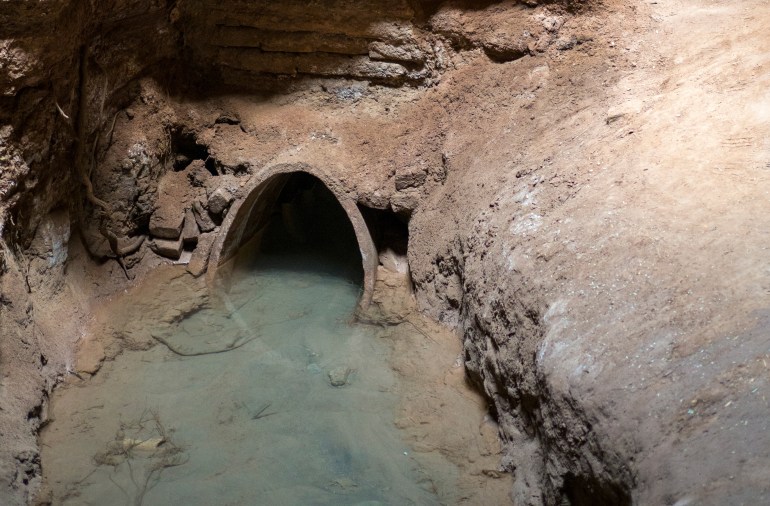 A qanat (underground water channel) in Shafiabad village near Kerman in Iran. Qanats have been used to supply water in Iran since the 1st millennium BC [Leisa Tyler/LightRocket via Getty Images]
A qanat (underground water channel) in Shafiabad village near Kerman in Iran. Qanats have been used to supply water in Iran since the 1st millennium BC [Leisa Tyler/LightRocket via Getty Images]The ancient qanat system enabled irrigation in desert environments, allowed for agriculture to flourish and fostered community cooperation. It is seen as the basis for decentralised water management in Iran, and a more sustainable solution to modern pumping and dams.
“Qanats are one of the oldest notions of a company in the world,” says Negar Sanaan Bensi, a lecturer and researcher in the faculty of architecture at the Delft University of Technology in the Netherlands. “They are based on a huge shareholding system” that requires different people living in a region to work together and use the water resources available.
It worked similarly to how a startup does today. A couple of people came together to start digging with hand-held tools for water. Once they got what they needed, more people would join and expand the tunnel, and take their share of the resources. Over time this spread throughout the country, with each municipality managing their local qanat. “They started with four or five people,” says Khaneiki. “But in the end they had hundreds of people cooperating.”
Khaneiki is now looking at how qanats are being used for new purposes and new forms – not for irrigation and cultivation, but for tourism and architectural purposes, he says, pointing to their traditional design and cultural significance, and the designation of some qanats as UNESCO tourism sites. China, which has 800 qanat systems, has built a museum explaining the history and engineering of the different systems. There are also statues of qanat builders digging tunnels with a pickaxe or collecting soil.
“They [qanats] are also coming back to life for the purposes of climate change,” Khaneiki says.
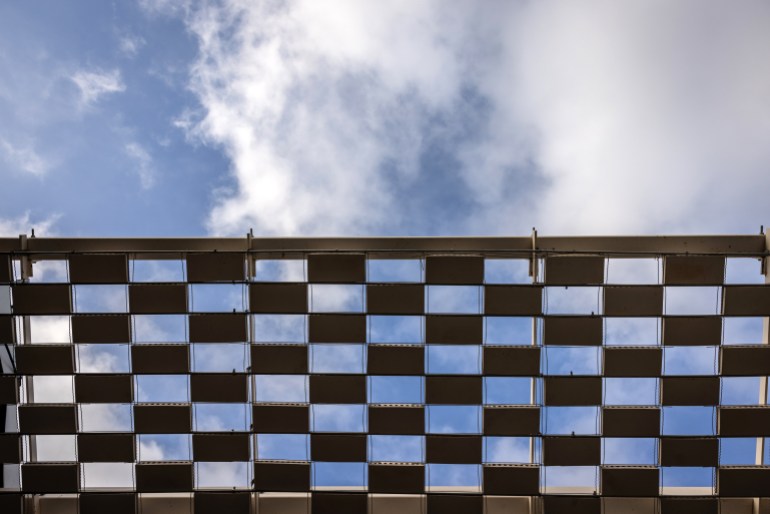 A shade structure in a sitting area at the unopened CartujaQanat pilot project, an architectural experiment in cooling solutions inspired by Persian-era canals [Angel Garcia/Bloomberg via Getty Images]
A shade structure in a sitting area at the unopened CartujaQanat pilot project, an architectural experiment in cooling solutions inspired by Persian-era canals [Angel Garcia/Bloomberg via Getty Images]How the old is being made new
Thousands of kilometres away from the arid regions of the Middle East, and even farther away from China, scientists Jose Sanchez Ramos and Servando Alvarez are using the concept of qanats to provide an oasis in the city of Seville.
As part of a city initiative to find solutions to rising temperatures, Ramos and Alvarez were given the opportunity to choose a location to experiment with bringing down temperatures in an outdoor space without relying on energy-intensive technologies.
One of those options was on La Isla de La Cartuja, an area northwest of the centre of Seville. The neighbourhood was once the location of the 1992 Seville Exposition, which drew 41 million visitors. Although the city has made some attempts to urbanise the space, these days it looks largely abandoned, with overgrown shrubbery, cracked sidewalks and a decrepit monorail station.
However, the area is home to a research and development complex that employs 15,000 people, a football stadium and the International University of Andalucía (UNIA). An abandoned amphitheatre used in the Expo has become the centre of Ramos and Alvarez’s work.
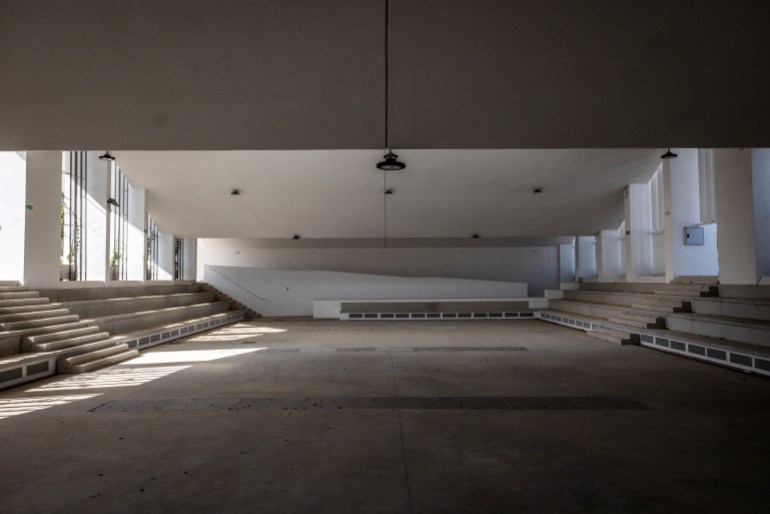 An auditorium at the unopened CartujaQanat pilot project [Angel Garcia/Bloomberg via Getty Images]
An auditorium at the unopened CartujaQanat pilot project [Angel Garcia/Bloomberg via Getty Images]The project, named CartujaQanat, is modelled after the Persian qanat system and seeks to cool the ground temperature of a space the size of two soccer fields by 6 to 7 degrees Celcius within La Isla de La Cartuja.
Partially funded by the European Union’s Urban Innovative Actions (UIA) office, this 5-million-euro ($5.1m) project involves a channel 20 metres underground that will carry water – but the purpose is not to transport that water.
Vertical vents along the canal drive the coolness of the water upwards, allowing it to reduce the ground temperature. “The key to the climate control techniques is the day-night cycle,” says Ramos.
During the nighttime, the water underground – about 140 cubic metres [36,984 cubic gallons] – cools off with the naturally low temperatures. Some of the water is pumped up and sent to the roof of the amphitheatre, which is covered in solar panels. Nozzles fan out the water on top of the panels, creating what’s called a “falling film”. This mechanism helps expedite the cooling process by reducing the depth of the water and allowing it to cool faster in the low outdoor temperatures.
During the day, solar-powered pumps push cooled water above ground where it gets funnelled through small pipes and pushed in front of fans that spray the cool air into the ground floor of the amphitheatre. Outside, a separate set of nozzles in small pools of water spray mist into the air, cooling by evaporation.
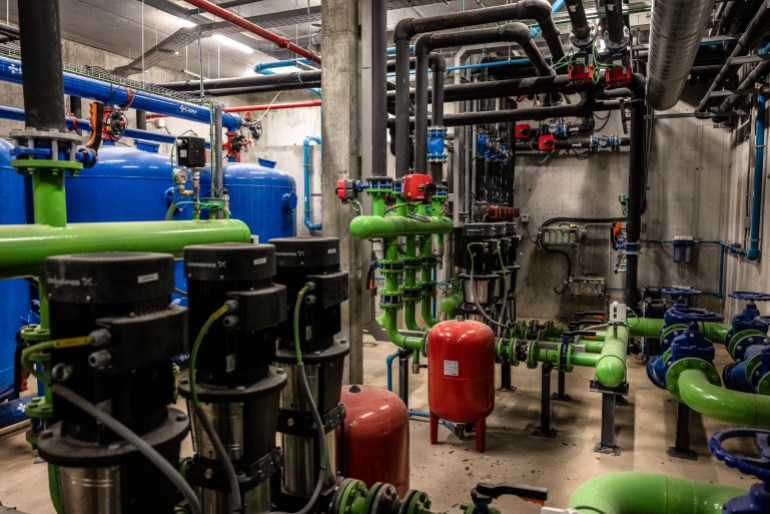 A pump room at the unopened CartujaQanat pilot project [Angel Garcia/Bloomberg via Getty Images]
A pump room at the unopened CartujaQanat pilot project [Angel Garcia/Bloomberg via Getty Images]Other elements help to keep the temperatures down: Vegetation planted on the inside walls cools via transpiration (excess water from leaves evaporates into the air), trees provide shade outside, and the roof is painted a heat-reflecting white.
The creators are hoping the space will become a communal point for university students and people who work at nearby companies. “The project aims to bring life back on the street,” says Ramos. “This will provide climatic refuge while allowing both shelter in the middle of the summer and the possibility of continuing to organise outdoor activities in the hot months.”
Alvarez says that the area should be completed by June, just in time for the summer when Spain experiences its highest temperatures.
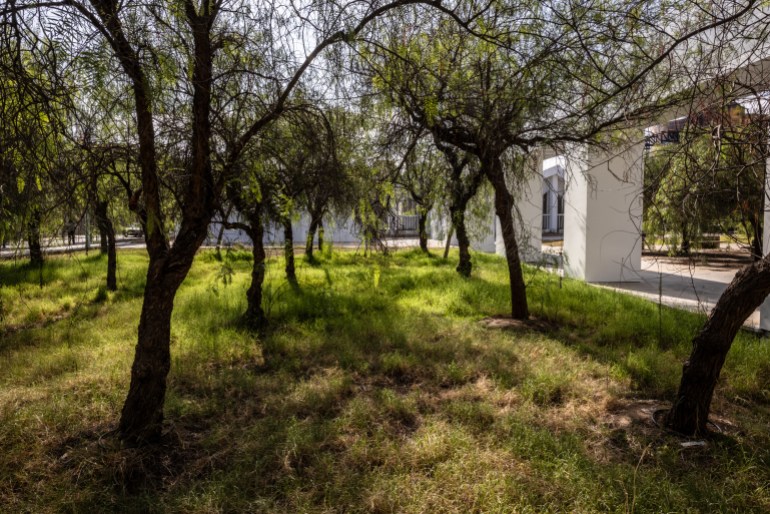 The creators are hoping the space will become a communal point for university students and people who work at nearby companies [Angel Garcia/Bloomberg via Getty Images]
The creators are hoping the space will become a communal point for university students and people who work at nearby companies [Angel Garcia/Bloomberg via Getty Images]A cool future
Ramos and Alvarez met more than 30 years ago when Ramos was one of Alvarez’s students at the University of Seville. “He asked good questions,” says Alvarez. “The people that pose interesting problems to me in the classroom are the people who I try to recruit for the future.”
Since then they have been working together to cool down Seville. In the 1990s, they developed wind tunnels along Seville’s avenues, taking inspiration from a Persian wind catcher called a bagdir, a tower with openings at the top that catch the wind and channel it downwards.
Alvarez says that they often look to other countries for solutions, especially those that have been dealing with intense heat for centuries.
For example, modern Moroccan buildings are being designed to include large north-facing windows and smaller south-facing windows that bring in natural light while maximising cooling. Los Angeles in the United States, and Ahmedabad in India, are using a new type of white paint to reflect up to 98.1 percent of sunlight and absorb UV light, which helps to combat urban heat and reduce energy consumption. White reflective paint has been used for centuries in Morocco and Greece, earning one famous city the name “Casablanca” (white house).
“[The Arab world] did it because they needed to … either you move or you die or you find something to cool your buildings. And they found something,” says Alvarez. “[CartujaQanat] is really a tribute to them,” he adds.
The team has already started applying some of their learnings to other parts of Seville.
“Bioclimatic” bus stops, which use a smaller-scale version of the CartujaQanat approach, are being installed in time for summer. Inside the shelter, air that has been cooled by a closed water system is pumped out via tiny holes, powered by solar panels on the roof – similar to a refrigerator,” Sanchez told local newspaper Sur last summer. He and Khaneiki say that they hope to have more citizen participation as the project moves forward
The efforts in Seville are a modern-day reimagining of the systems built thousands of years ago, Khaneiki says. “These are qanats built for modern people by modern people. This is a resurrection of qanats in the new era.”

 2 weeks ago
110
2 weeks ago
110


